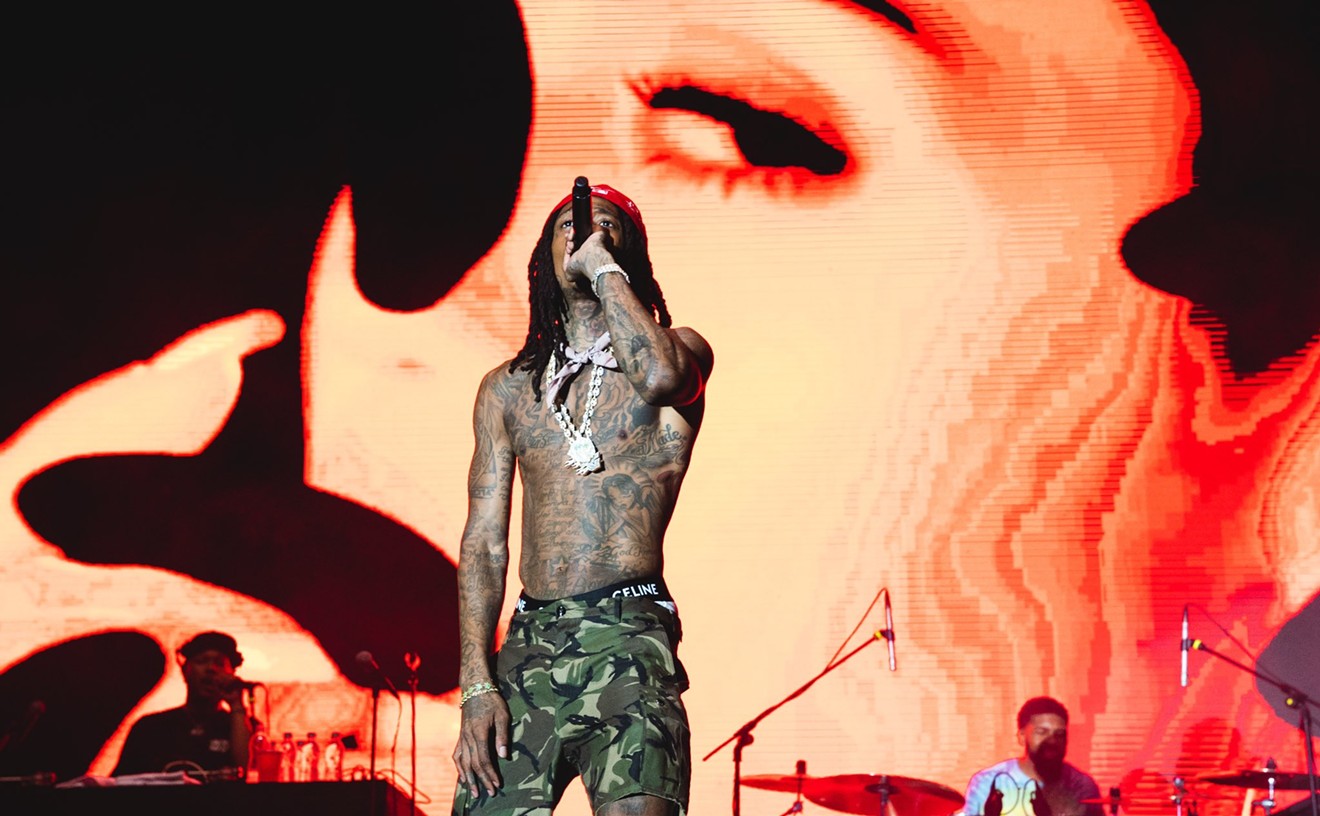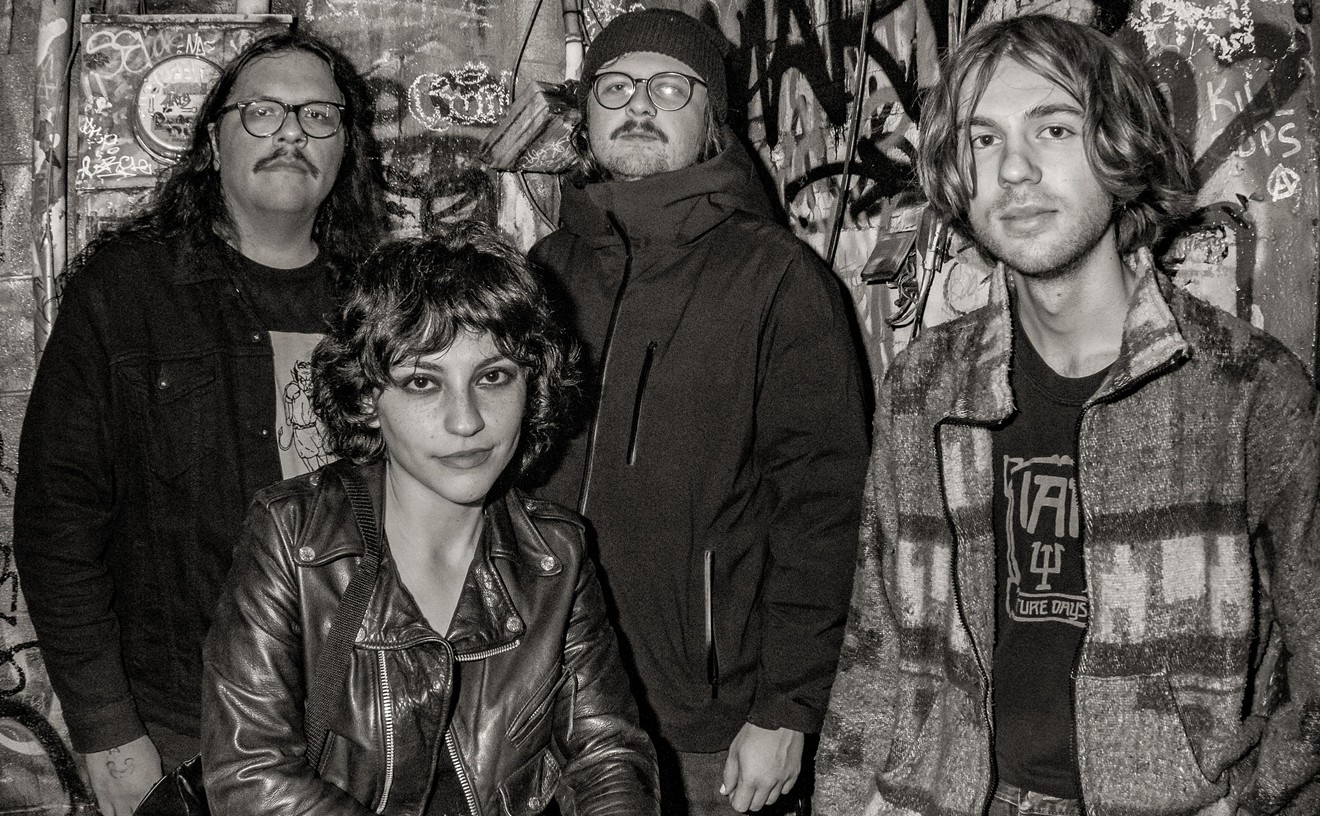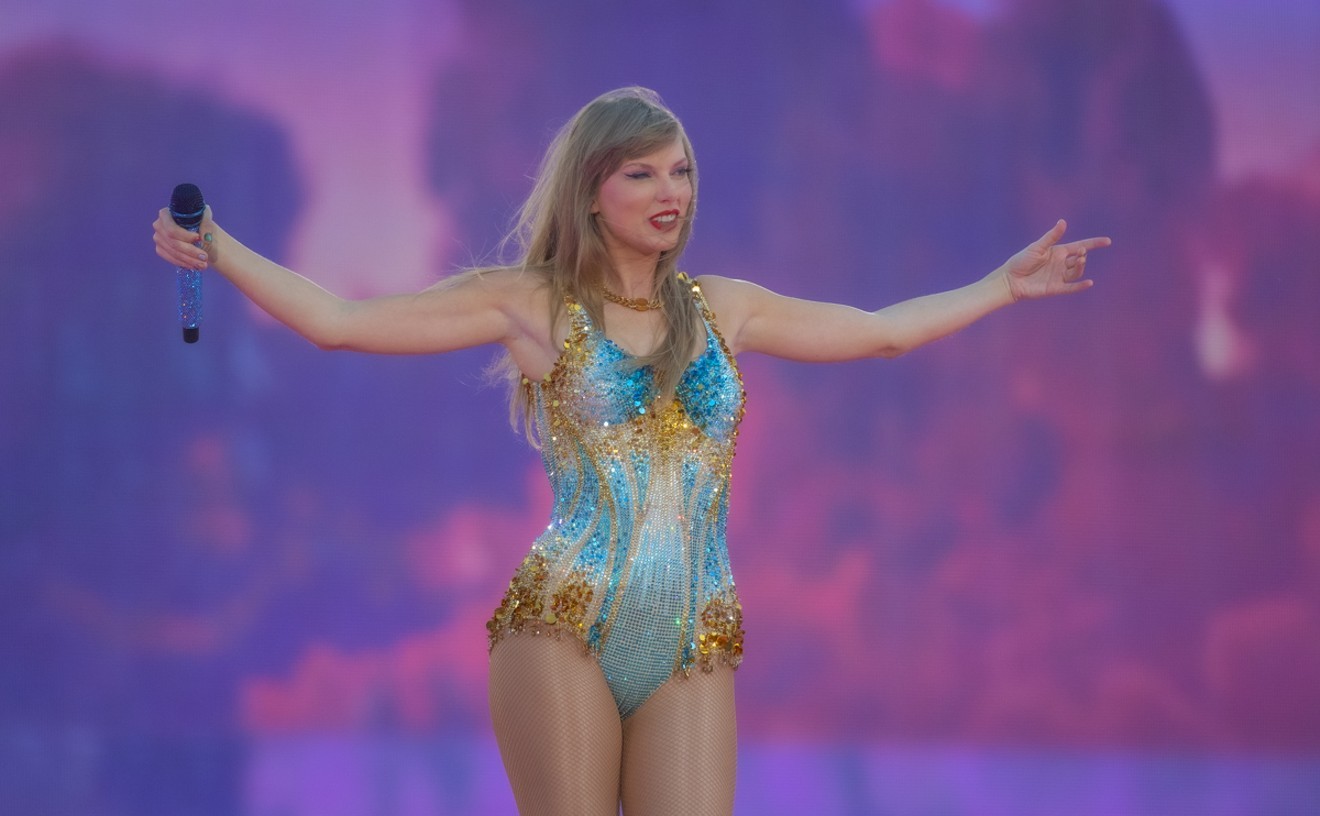At the venerable age of sixty, bassist George Porter Jr., who provides the effortlessly funky heartbeat for Porter Batiste Stoltz, has become a hero to today's jam-band aficionados. But this development isn't as unlikely as it initially seems. Porter made his bones as the anchor of the Meters — a New Orleans-based outfit that's among the greatest, if least heralded, groove combos of all time — and when the group was getting started around four decades ago, jamming wasn't just an option, it was a necessity.
"We were out playing gigs that were three and a half hours, and all of the songs on our first record were only two and a half minutes long," Porter says. "Every one of those songs turned into a jam, you know? And they went from there to another song. So what happened with that band was, in the late '60s, we were probably the very first jam band on the planet."
That's hardly the only mark Porter's left on popular music history during his quietly influential career. His playing with the original Meters — guitarist Leo Nocentelli, drummer Joseph "Zigaboo" Modeliste and keyboardist/vocalist Art Neville, who went on to renown as one of the Neville Brothers — helped establish what many of us think of as the New Orleans sound. In the process, Porter also created the raw material for plenty of subsequent hip-hop and R&B ditties — not that he's seen many of the spoils from these samples. And he's also served as an inspiration for contemporary acts such as Gov't Mule, whose guitarist, Warren Haynes, named a tune "3 String George" to commemorate an anecdote from Porter's nascent days as a musician.
"I bought a bass guitar from a guy named Richard Dixon," Porter recalls. "My very first bass guitar that I owned. I paid $50 for it. It was a Fender Jazz bass, and Richard painted that thing bright red with house paint. But the bass had a bad nut up there on the tuning peg, and the thing came out. At the time, I didn't know that I could go to the music store and buy another one — I really didn't. So I played the bass with those three strings for a long time, until Art Neville said something." Porter adds, "Art loves to tell that story. He'll say, 'You act like you're big now, but I remember you when you only had three strings.'"
Of course, three strings were more than enough for Porter. When asked if he could have made do with one in a pinch, he laughs before conceding, "Well, if it was a pocket that didn't require a lot, yes, I could!"
Born in the Big Easy in 1947, Porter took a circuitous route to the bass. At age seven, he and Modeliste, a childhood friend, took simultaneous piano lessons from the latter's older brother. But before long, "the competition was way too loud and boisterous," Porter maintains. "So Zig's mom said, 'I've just got to end it' — and we ended the piano lessons. But my mom gave me a guitar for my birthday/Christmas present at age eight, that next year." Porter stuck with the guitar until his middle teens, when opportunity presented itself. The Vietnam War was starting to heat up, and by happenstance, most of the young electric-bass players in the area wound up being drafted. Porter, who rated 4F because of a slightly crooked spine, rushed to fill the void, accidentally discovering his vocation in the process.
Before long, Porter joined forces with Neville, Nocentelli and Modeliste in a quartet that served as the studio band for production partners Allen Toussaint and Marshall Sehorn. In that capacity, they provided the sounds for headlining acts such as Lee Dorsey, whose songs have been sampled by the Beastie Boys, among many others. Then, in 1969, they finally got the chance to step to the fore. According to Porter, the players finished a Dorsey session early, and Sehorn encouraged them to lay down some instrumental tracks on leftover tape. They quickly reeled out four numbers that Sehorn named "Sophisticated Cissy," "Cissy Strut," "Here Comes the Meter Man" and "Sehorn's Farm." Sehorn then dubbed Porter and company the Meters and released the results on the tiny Josie imprint. Although no one expected much, both "Sophisticated Cissy" and "Cissy Strut" became Top 40 hits.
Such success wouldn't be repeated. The Meters put out a slew of great singles, including "Look-Ka Py Py," but while some made the R&B charts, they failed to cross over. After signing with Reprise Records in 1972, the Meters attempted to up their accessibility by adding vocals, and the results were winning: Check out "Africa," which the Red Hot Chili Peppers remade as "Hollywood (Africa)" in 1985. Other stars noticed their skills, too. The Meters backed the likes of Robert Palmer, Dr. John and Labelle (on the classic "Lady Marmalade"), and Porter took part in a one-shot Mardi Gras-themed recording with Paul McCartney shortly before the Rolling Stones chose the outfit to open for their 1975 tour.
Nevertheless, fine albums such as 1974's Rejuvenation and 1975's Fire on the Bayou sold minimally, and a planned publicity push for 1977's New Directions came apart when Art Neville and his younger sibling, percussionist/vocalist Cyril, who'd joined the Meters along the way, decided to hook up with family members Aaron and Charles in the Neville Brothers. The split played havoc on a scheduled showcase during the first season of Saturday Night Live, which Porter, Nocentelli and Modeliste eventually played alongside keyboardist David Batiste — father of Porter's current bandmate, drummer/vocalist Russell Batiste. Reprise soon decided to cut its losses, and over the next year or so, the Meters fell apart.
Since then, the group has reunited on several occasions — most notably for a stretch beginning in 1989 when Porter, Nocentelli, Art Neville and Russell Batiste (filling in for Modeliste, who chose not to participate) dubbed themselves the Funky Meters. The lineup shifted again in 1994, when Nocentelli bowed out and was replaced by guitarist Brian Stoltz, whose credits included work with none other than the Neville Brothers. As the years passed, Art, who's seventy, became less interested in touring, but the three remaining players had energy to burn and decided to continue making music together, albeit under another moniker. Calling the trio a variation on the Meters seemed like false advertising because Porter was the only founding member, so they became Porter Batiste Stoltz.
On the new act's debut disc, 2005's Expanding the Funkin' Universe, songs such as "All We Wanna Do" mix occasional rock and blues touches with ass-shaking rhythms. Still, Porter feels that the biggest distinctions between Porter Batiste Stoltz and its precursors have to do with musical forcefulness. "The three-piece band definitely leans on being more powerful — more power funk," he says. "For most people, 'power' means 'louder,' and it probably is louder — but it isn't much louder than the Funky Meters." Still, he resists the urge to make up for the absence of keyboards with more notes. "Space is a very equal part of the music," he allows. "It's not what you play; it's what you don't play that makes syncopation work."
Post-Hurricane Katrina, Porter moved out of New Orleans. Watching what he considers to be bureaucratic mishandling and counterproductive blame-casting in relation to rebuilding projects made him too upset, so he and his wife headed to Darrow, Louisiana, a small community about an hour away. He also tries not to waste his anger on bitterness over the unpaid royalties he feels the Meters deserve for sample use. While he's pretty sure Heavy D eventually ponied up for "Gyrlz, They Love Me," he says he never saw a nickel from "Queen Latifah and a bunch of other ones who all claimed they were broke and couldn't pay us the money." (The Queen's doing pretty well these days, but she's yet to make good.) Likewise, a lawsuit against Whitney Houston over the use of "Hand Clapping Song" in her tune "My Love Is Your Love" was eventually tossed; the judge ruled that the Meters cut was based on material in the public domain.
Other modern performers have offered a different kind of compensation. "Some of the jam bands of the day — the Widespread Panics and other bands that came out around then and started playing our music — they've introduced us to another community of music buyers and listeners," Porter says.
Fortunately, Porter's jams taste as fresh as the day they were made.
Click here for more of our interview with George Porter.











